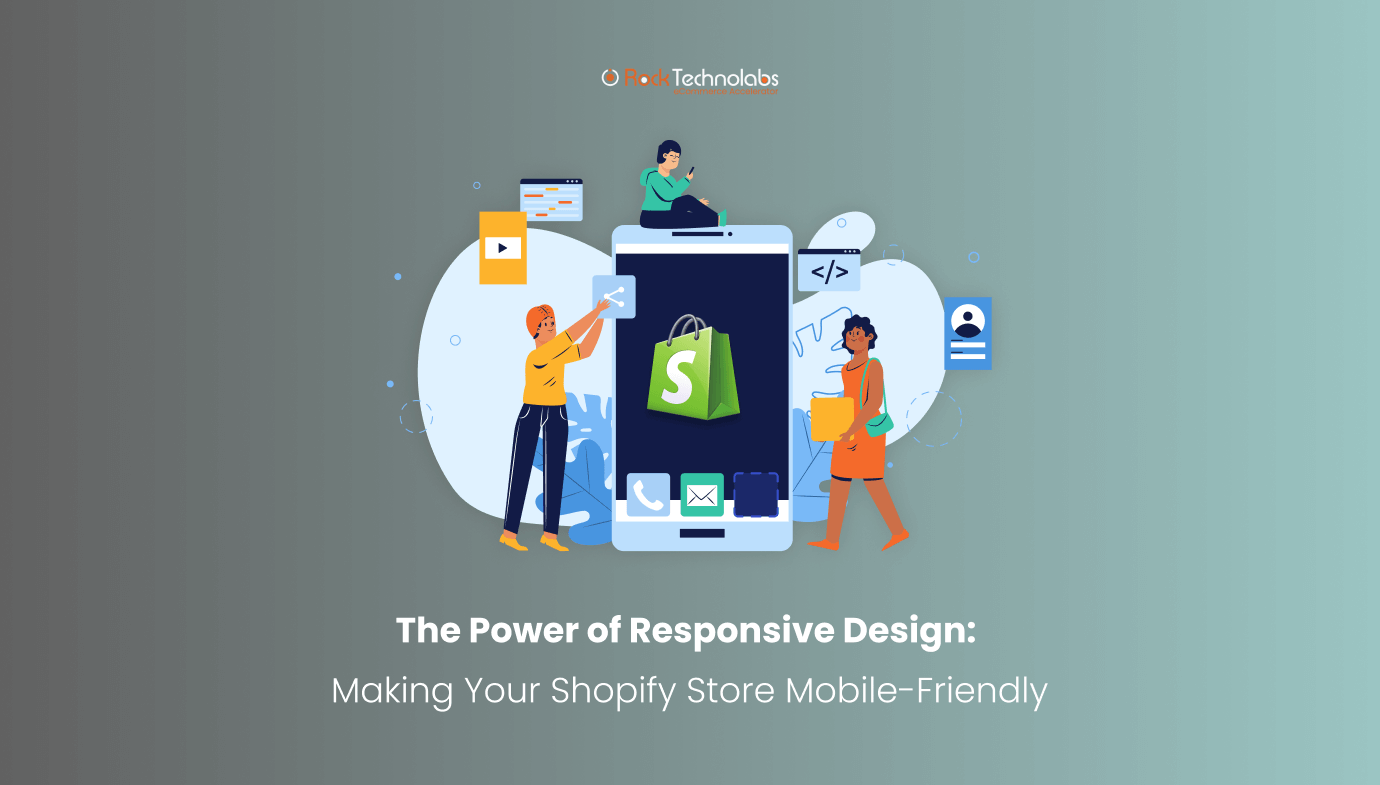The Power of Responsive Design: Making Your Shopify Store Mobile-Friendly

When you run an online store like a Shopify store, mobile-friendly websites are a must. Mobile devices are the most common way online shoppers shop, making it essential for sites designed for e-commerce to be mobile-friendly.
Although some marketers consider mobile marketing a trend, it should be considered a staple in our lives as consumers and professionals. According to Google, 61% of mobile customers will not return to poorly designed mobile sites, while 40% will visit competitors’ sites instead.
By using mobile-friendly Shopify stores, your sales, conversions, and brand recognition will increase. With Shopify development services to your rescue, you deliver mobile-friendly solutions for your customers. Now, let’s see how to make your Shopify store mobile-friendly. Let’s begin!
About Shopify Mobile Optimization
With more and more consumers shopping online through mobile devices, Shopify store owners must ensure their mobile experience is satisfactory.
Using Shopify Mobile Optimization practices, you allow mobile devices to your Shopify store easily on smartphones and tablets. As a result, the mobile version of the store’s website, its loading speed, and its navigation will improve for customers.
Having an attractive and easy-to-navigate website can benefit your sales and customer loyalty.
Importance of Mobile Optimization for Shopify Stores
In the age of mobile devices, Shopify stores must optimize their stores for mobile devices. A mobile-friendly Shopify store means the website will be responsive, load faster, and more accessible to navigate on small screens. Here are a few reasons why you should optimize your Shopify site:
- Mobile device use is on the rise: People browse and shop online more and more using mobile devices. Having a Shopify store that does not work on mobile devices could also result in you losing a substantial chunk of your customer base.
- Rebuild the brand’s reputation. A brand’s reputation needs a well-optimized website to provide a positive user experience and make it more accessible to potential customers.
- An increase in traffic. Mobile devices are estimated to make up most of the website traffic, making mobile-friendly Shopify stores more attractive.
Best practices optimize your Shopify store for mobile devices.
There are many ways to make your Shopify store mobile-friendly. In addition to improving SEO, it also improves user experience. Here are some of the most important. Following are some tips for making your Shopify store mobile-friendly:
Menu with simplified navigation
Enhancing your online presence begins with a well-designed navigation menu. Mobile devices’ screen size is smaller than desktop computers and laptop computers. To simplify your navigation menu and make it easy to use, keep it short and simple.
Mobile websites are often designed with hamburger menus. While taking up less screen space, this style ensures that menu items are large enough to be easily selected with a finger.
Furthermore, mobile websites often provide an additional menu to assist customers in taking desired actions. Additionally, it boosts conversion rates for online store owners by making mobile websites smoother to browse for customers.
Showcase product images
Make sure your Shopify site features your products prominently. The problem is especially acute on mobile devices with limited screen space.
Delete every unnecessary element from your page and let your product images take center stage. Your products must be shot and presented similarly to be genuinely effective.
Improve mobile visibility by changing the font size.
Your mobile device has limited space for displaying information about your products and services, but you still need to display important information.
If your site’s font size is small, visitors may find it difficult to read and may give up on shopping there. Ensure the font size is 16 pixels or bigger to improve mobile visibility. By doing this, you will make sure that your text will fit smaller screens easily.
Furthermore, some conventional fonts are easier to read on mobile devices than others. On smaller screens, sans-serif fonts such as Helvetica and Arial are more legible. Moreover, responsive design automatically adjusts your website’s font size and layout according to the screen size.
Keep pop-ups to a minimum.
Popups are an effective way of increasing email subscriptions, letting visitors know about sales, and reminding them about abandonment. A lot of popups, however, can be a nuisance.
The popup feature is a common component of many websites that can effectively capture user attention or encourage users to take action. To avoid overwhelming your users with too many popups, use them in moderation.
In addition, too many popups can negatively impact the experience of your visitors on your website. Irrelevant popups can frustrate users and drive them away from your site. When using popups, it’s best to use them carefully and strategically. Use them only to promote limited-time offers or collect e-mail addresses whenever possible.
Collapse menu sub-sections
It is common for websites to have several headings that correspond to specific categories of products, offers zones, or even individual product pages. Considering how many products a Shopify eCommerce website sells, there will be many sub-sections. Adding these subsections to a list will bloat the user interface and make using it less enjoyable.
If any sub-sections of the menu are collapsed, users will still have access to them when needed, but otherwise, they will remain hidden. Under technical terms, nested menus or submenus are collapsed sub-sections of a menu.
Mobile-optimize your checkout process.
Besides optimizing your entire website for mobile devices, you should also optimize your checkout pages and processes. When it comes to your mobile checkout process, keep these points in mind:
- Reduce the number of unnecessary steps in the checkout process
- Use large, easy-to-click buttons on your website to make it easy for customers to navigate
- Automate the checkout process with autofill and autocomplete
- Mobile-friendly and fast-loading checkout pages are essential
- During checkout, customers can pay with their phones using Apple Pay and Google Wallet.
- A well-optimized checkout process can increase conversion rates and sales for your business.
Keeping up with mobile optimization trends and technologies
The mobile optimization field constantly evolves, so staying current with current trends and technologies is essential. A new set of opportunities and challenges arise as mobile devices advance in capability and usage patterns. Participating in webinars, attending conferences, and connecting with the Shopify community are great ways to stay on top of the latest developments.
Utilize mobile forms properly.
The design of mobile forms must be user-friendly and efficient to ensure their effectiveness. Often, businesses use mobile forms to convert visitors to customers on their websites. By making them easier to use and more effective, customers will have a better experience.
Conclusion
Shopify’s mobile optimization is essential for increasing sales and improving customers’ shopping experience. Optimizing the Shopify site for mobile is best accomplished by building it with a mobile in mind. Furthermore, Google prioritizes mobile-friendly shopping experiences and mobile-first approaches. To make your shopify store mobile optimized, Hire Shopify Developers today and boost sales.





